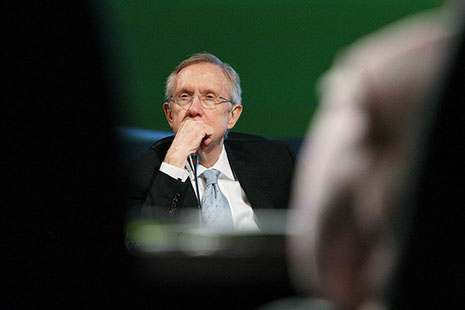IT’S A REVERSAL of all the health policy stereotypes: the stark contrast between healthcare reform in Australia, where reports outnumber actions and listening tours substitute for decision-making, and the United States, where the chance of substantive reform increases every day.
Tackling healthcare reform at a time when everyone recognises that the system is broken and economically unsustainable – with the cooperation of all the major stakeholders, and in the absence of any substantive Republican counter-proposals – could well be what has driven progress in the United States to a point where over the next week we will likely see bills up for votes in both the House and the Senate. But it does raise the question: what’s so different in Australia?
Here in Washington DC, a torrid summer dominated by angry town hall meetings and lots of misinformation saw the White House floundering. President Obama used his speech to the joint session of Congress in early September to regain the upper hand. Since then there has been a steady flow of data, talking points, media advertisements and organised, themed rallies from the bills’ supporters.
The response from the public and the legislators can be measured in the polls and in the progress that has been made on the Senate and House bills, both of which will now contain a public health insurance option. It seems that the public has tired of the sturm und drang from conservative commentators and has rejected the Republicans as the “Party of No.”
Still, for all the optimism these days, the Democrats are still struggling to find unity on healthcare reform, and there are only nine weeks left in the year to deliver a bill to Obama’s desk.
In Congress it seems that Senate leader Harry Reid’s bold announcement that he will go with a public insurance provision but will allow states to opt out seems to have helped moderate Democrats to hold their ground, although it may cost the support of Republican senator Olympia Snowe and independent senator Joe Lieberman.
The Republican leadership is promising that it will attempt to strangle the bill before formal debate begins. So Reid’s first challenge is to gain sixty votes – the number needed to overcome a filibuster – just to bring the bill up. Once this hurdle is passed, actual passage of the bill will require only a simple majority of fifty-one.
In the House, Speaker Nancy Pelosi’s effort to draft a consensus healthcare bill to bring to the floor had stalled because of disagreements among Democrats. The primary issue was not the public insurance option but abortion. Pelosi is still short of the 217 votes she needs to pass a robust public option, and the situation is further complicated by the position of a group of about forty legislators who say they will prevent House leaders from bringing the bill to the floor unless they allow a vote on an amendment to explicitly outlaw federal funding for abortion.
Initially Democrats tried to make the bill “abortion neutral” by maintaining existing federal policy without further restricting abortion rights. After amendments in the Energy and Commerce Committee, the House bill now requires even greater segregation of federal funds from any funds used for abortion than is currently the case. Pelosi has now announced she will introduce the bill this week.
The reality is that these bills are very wide-ranging in scope and the current flashpoints, the public insurance plan and abortion funding, are a miniscule part of legislation that expands coverage, reforms the health insurance market, addresses prevention, quality and safety, cracks down on fraud and abuse, tackles health inequalities, and begins the process of “bending the curve” on burgeoning health costs.
The United States has been provided with a unique opportunity for healthcare reform that sees insurance funds, doctors’ groups, healthcare providers, pharmaceutical and device manufacturers, unions and community groups aligned in support of change. It’s an opportunity that the president and Democratic leaders have seized, turning the economic downtown into part of the rationale for action. And it’s an opportunity that Republicans, still smarting from their electoral losses, have been unable to accept in even the smallest way.
The factors that play into Australia’s window of opportunity are both similar and different. But the main difference is that the prime minister and Labor leaders have failed to seize the opportunity, which is now leaching away. The fate of healthcare reform is not yet sealed in either country, so anything is still possible. Both countries face federal elections next year, and the governments of the day will be assessed on their ability and their willingness to deliver on key election commitments. •




